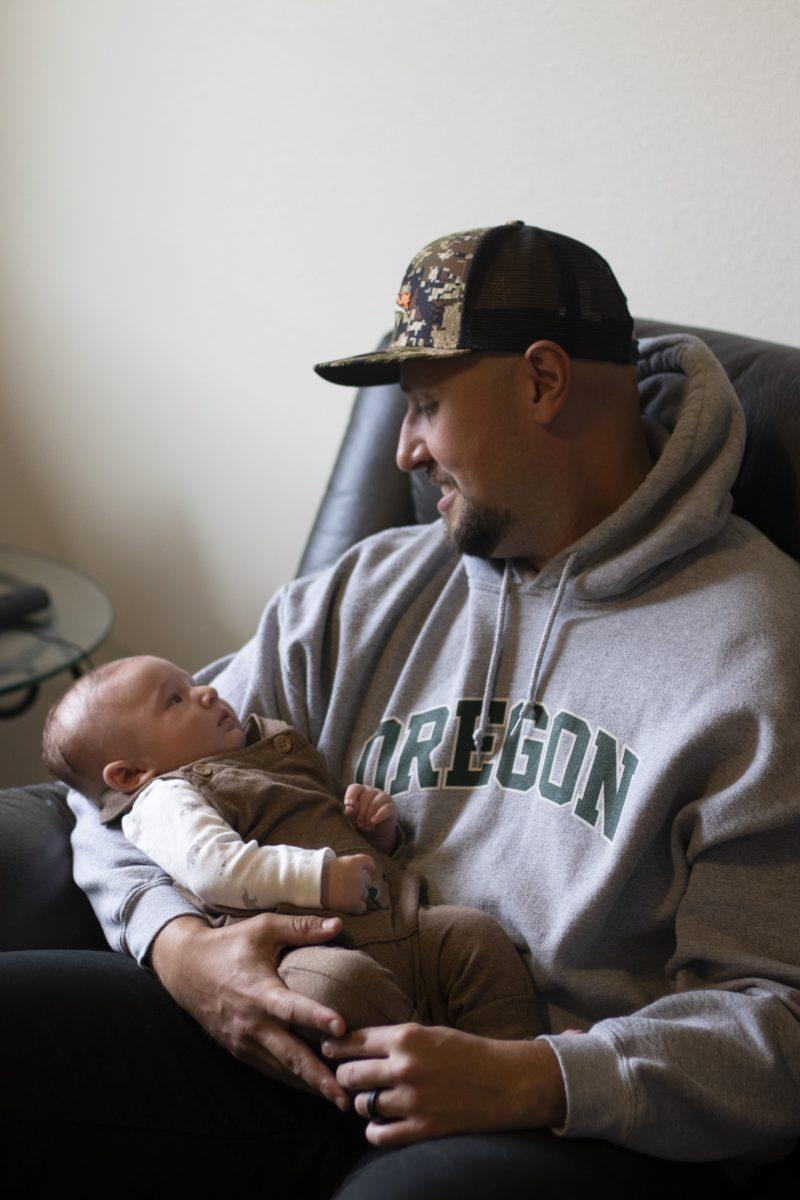“Worried about the economy?” begins a 2012 print advertisement for Avon, a multi-level marketing company that sells beauty and household products. The ad says that, despite scarce jobs and “tight” credit, you can “start an Avon business and take control of your finances and make more money.”
Avon did not pay for the distribution of the advertisement. It had its employees pay the fee out of pocket and post the ad on their own. The employees had no control over the typeface, format or usage of the ad, despite Avon’s insistence that they ran their own business.
In a more typical business relationship, an employee using their own finances to advertise a product they have no control over would likely be seen as strange at best and exploitation at worst.
Almost eight percent of adults in the United States have responded to a recruitment call similar to the one by Avon at least once, according to a report by AARP. In 2018, over 20 million Americans worked in multi-level marketing, or MLM, companies like Avon. They recruit and sell products in schools, in people’s homes and on your social media feeds. People who get involved with MLM typically have previous financial problems, so they are more susceptible to buy into the promises of financial freedom that MLM companies advertise.
The vast majority of people who get involved in MLM lose money. This is not because MLMs are a flawed business model, but because they are meticulously structured and designed to siphon money out of the pockets of willing victims and funnel it into the hands of the wealthy few on top. Despite this exploitative system, companies that use the MLM structure rake in billions of dollars each year and face no shortage of new recruits.
A 2011 report by the Federal Trade Commission analyzed over 350 MLM groups in America and found that 99 percent of MLM consultants break even or lose money while their earnings funnel upwards only to the top one percent of consultants. While MLM practices are technically legal, they ride a very thin line and often veer off into pyramid scheme territory.
“MLM makes even gambling look like a safe bet in comparison,” Jon M. Taylor, the author of the report, writes. “MLM as a business model is the epitome of an ‘unfair or deceptive acts or practice’ that the FTC is pledged to protect against. … For promoters to present MLM as a ‘business opportunity’ or ‘income opportunity’ is a misrepresentation.”
Unlike traditional retail, the greatest financial gains come from recruitment, not sales. Distributors are encouraged to constantly advertise the products and opportunity to anyone and everyone around them who will listen.
MLM companies sell products or services through a network of unsalaried distributors. Instead, they rely entirely on commission from two sources: direct commission from their own sales and indirect commission from the sales of distributors that they recruit into the company. All those they recruit become the “downline” of the originator.
In this way, commission flows from the bottom up, creating an incentive to keep recruiting. The companies recruit and keep members by advertising MLM as a community and a way of life.
Literature provided by the companies focuses a bit on money, but far more on feelings: personal confidence, a renewed sense of purpose, even a changed life. MLM companies don’t just pitch financial success; they pitch a kind of rebirth. And though the thought of MLM companies can conjure images of awkward product pitches and profit-seeking, defenders of the system often speak of lifestyle and community more than money.
Creating that sense of community is a core part of how MLM companies keep people coming back. When your downline is more like a social group, abandoning it to escape the cycle is a lot more difficult than quitting a typical job.
Ask any active distributor of an MLM like Avon and you may hear them refer to their downline as a kind of family. Sometimes, as in the case of Amy Sky, an “Exec National VP” rank consultant for the Swedish cosmetics MLM Arbonne, the downlines come with monikers like “Amy Sky Nation.” Phrases like “Successline” and “Family Tree” are used to refer to one’s downline, giving a personable and friendly face to the mass of numbers and vague terms.
Danie Morris, a “Trainee Sales Leader” for Avon, wrote in a 2017 testimonial,“[Avon] has helped my social anxiety to no end … I almost gave up on everything … but, alongside my kids, Avon kept me going and gave me something to focus on.”
The prospect, not just of financial independence, but of purpose and community, is an appealing one. In a 2019 article by the Guardian, a subject referred to as Rachel, a former member of the MLM company Forever Living, recalls using phrases like “control your own destiny” and “lifestyle-changing opportunity” when recruiting.
Though a lucky few find success, for most MLM consultants, this “lifestyle-changing opportunity” is characterized by emotional stress, financial hardship and strained relationships. Rachel goes on to say she felt guilty unless she seemed fully engaged and was even instructed by her mentors to “stay away” from anyone, including friends and family, who were skeptical of the company, arguing that they would harm her mindset and hamper her chances of success.
“It sounded like [my friend] was part of some spiritual group of people who are trying to pursue some kind of alternative lifestyle,” says Kira Oliver, a University of Oregon graduate whose friend worked for WorldWide, a group affiliated with Amway. “She found solace in this community and in the values that the people around her also hold.”
“I would ask questions about [Worldwide],” Oliver says. “I thought they were simple, like, ‘how do you make a profit?’ And then it’s almost like I would be gaslit into thinking that is an unreasonable question to be asking.”
Carley Campbell, a student at Montclair State University and former member of MLM company The Curv NYC, found herself in a similar situation to Rachel. As a new recruit, Campbell was frequently checked up on by a mentor in the company.
“She would call me and be like, ‘Hey, how are you? How’s college going?” Campbell says. “What I ended up finding out is that we had to do meetings at, like, every hour of every day. I would wake up and I would not leave my room. There would be times where I would not see the sun because I had to be sitting in front of my computer.”
Campbell’s meetings involved listening to testimonials that promised a future full of money, success and independence: how to be a successful person, the rules one must remember and how The Curv NYC can get you there.
The Curv NYC did not bring Campbell millions. Instead, the pressure gave her a panic attack. Campbell’s parents, upon overhearing a seminar from an alleged Curv success and the multi-billion dollar fortune he had obtained without going to college, staged an intervention for Campbell.
After quitting, Campbell is glad to be rid of the obligations and stress. Even if she had stayed and followed all of the tips, the odds would have been heavily stacked against her.
Cornell Law School created this illustrative model: Imagine that a scheme is sustainable if each member recruits nine new members. At the ninth level, this system would theoretically contain 387,420,489 members, a number larger than the population of the entire United States. Just one more level beyond that, the number approaches 3.5 billion. MLM companies do not reach these numbers because the amount of consultants that either remain inactive or quit shortly after starting is much higher than it is in regular companies. Even if everyone did remain active, the model would grow unsustainable due to the sheer amount of people it requires to continue working.
This model shows that success of people who participate in MLM is statistically improbable and even impossible for the majority of recruits because it requires a never-ending chain of new recruits for anyone beyond the lucky few to succeed.
While those in the top ranks collect massive amounts of commission, new recruits provide the company free advertising, move the product, conduct the sales and hold the events all out of pocket. Sometimes they act as customers too. Some companies, like Arbonne, allow distributors to subsidize lacking sales with personal purchases, meaning that during a bad sales month, a distributor may not qualify to receive compensation or commission unless they cough up their own money to make up the difference. This is called the “Maintenance Requirement.”
Many MLM companies periodically release earnings statements. While the sales pitches may conceal the fact that the grand majority of employees make no money, the numbers cannot lie. Arbonne reported in its 2019 earnings statement that a typical “independent consultant” earned between $120 and $502 in 2019. These numbers do not account for expenses like monthly kit purchases (around $250 a month) that consultants are expected to buy. At minimum, most consultants will pay Arbonne over $3,000 annually in product purchases.
The figures reported by Arbonne only take into account consultants who had earnings, not those who failed to make commission or failed to make sales that outweighed money lost.
Previous reports show the number of active, earning consultants to be as low as 12 to 13 percent, illustrating the deceptively narrow nature of the statistics on display.
“The reader may wonder if it is appropriate to refer to MLM, with its inherent flaws, as a ‘business’ at all,” writes Taylor.











![[Photo Courtesy of the Lara Family]
Ruben embraces his beloved childhood goat, Katrina.](https://ethos.dailyemerald.com/wp-content/uploads/2025/05/katrina-1-1060x1200.jpg)





